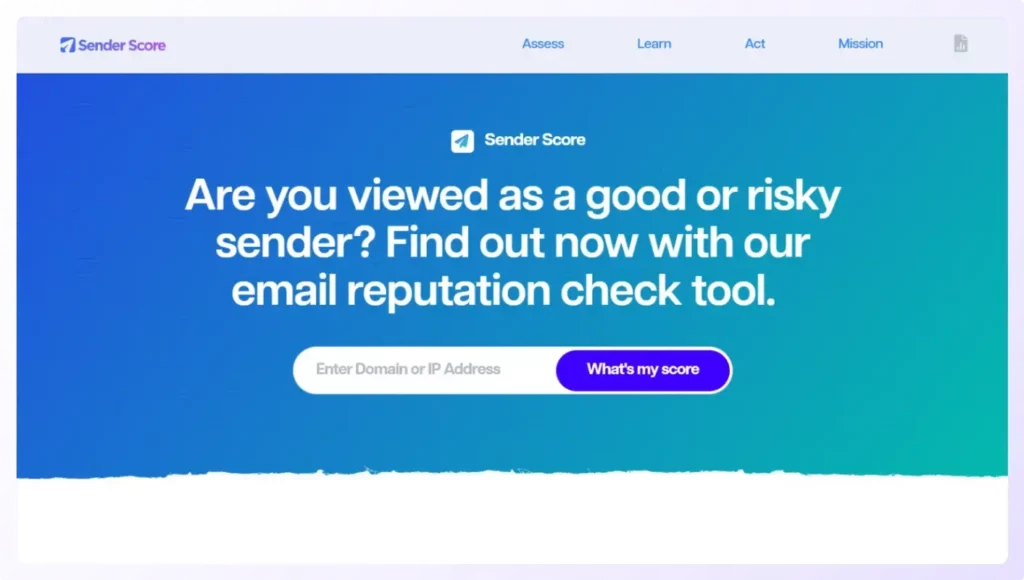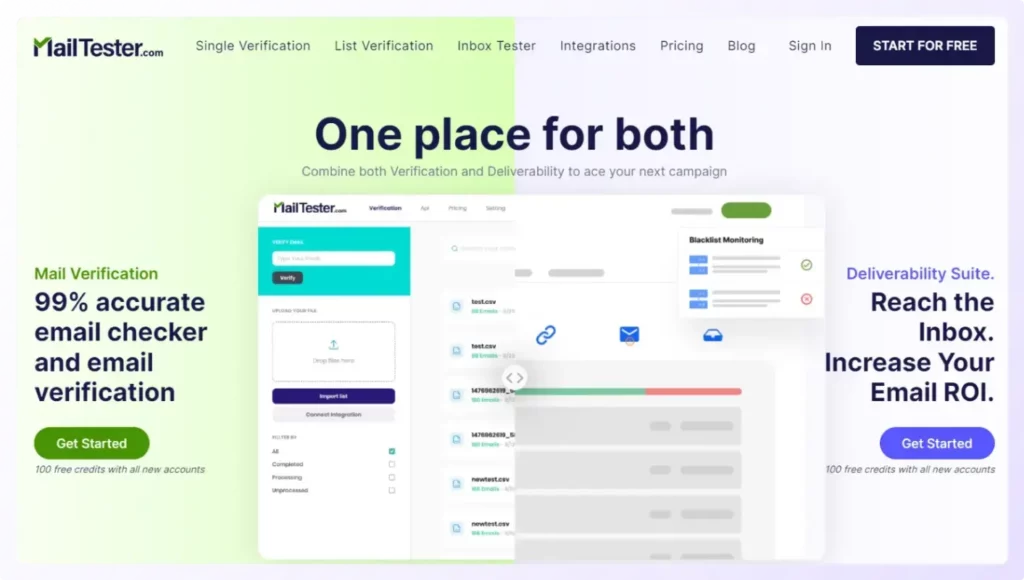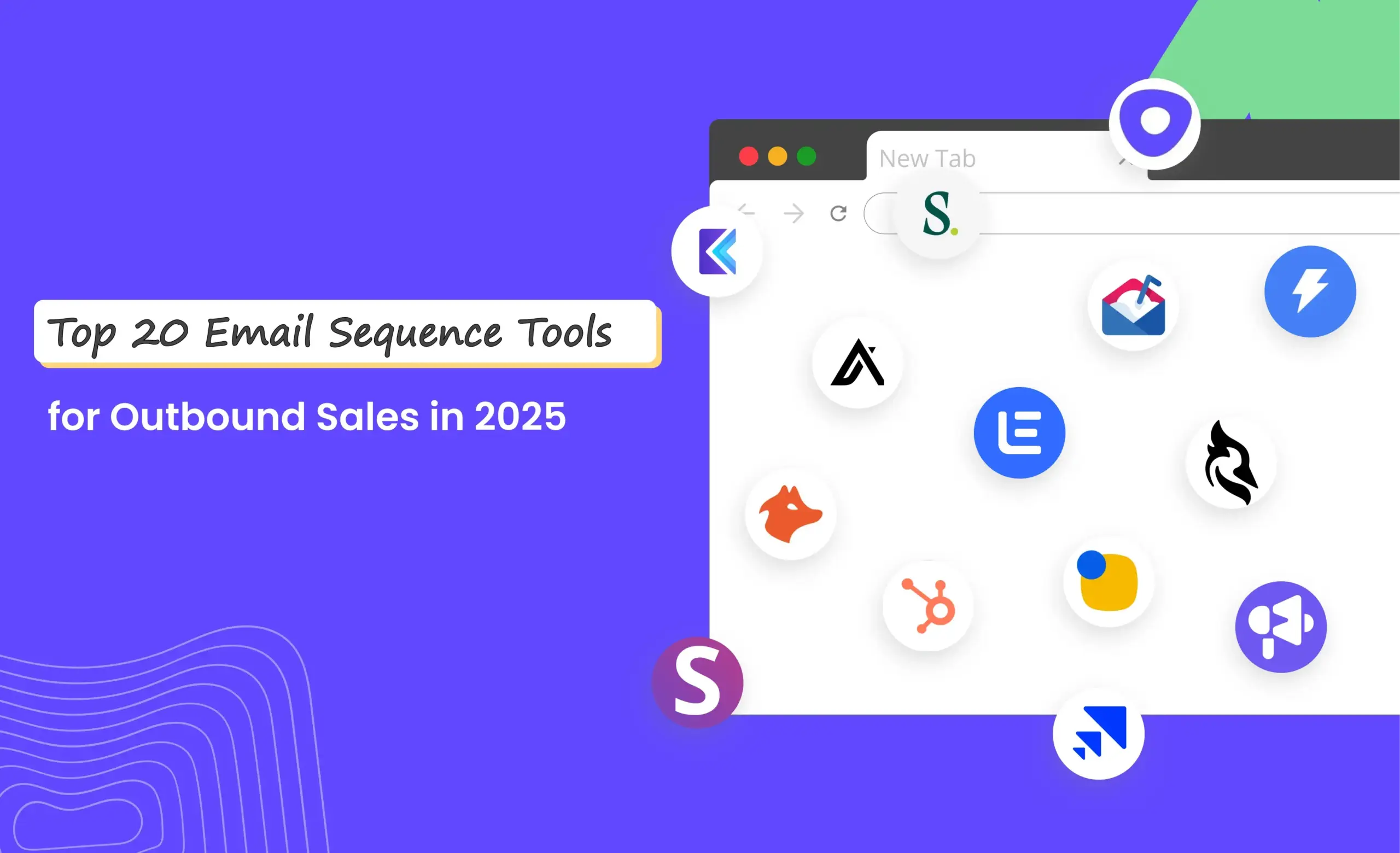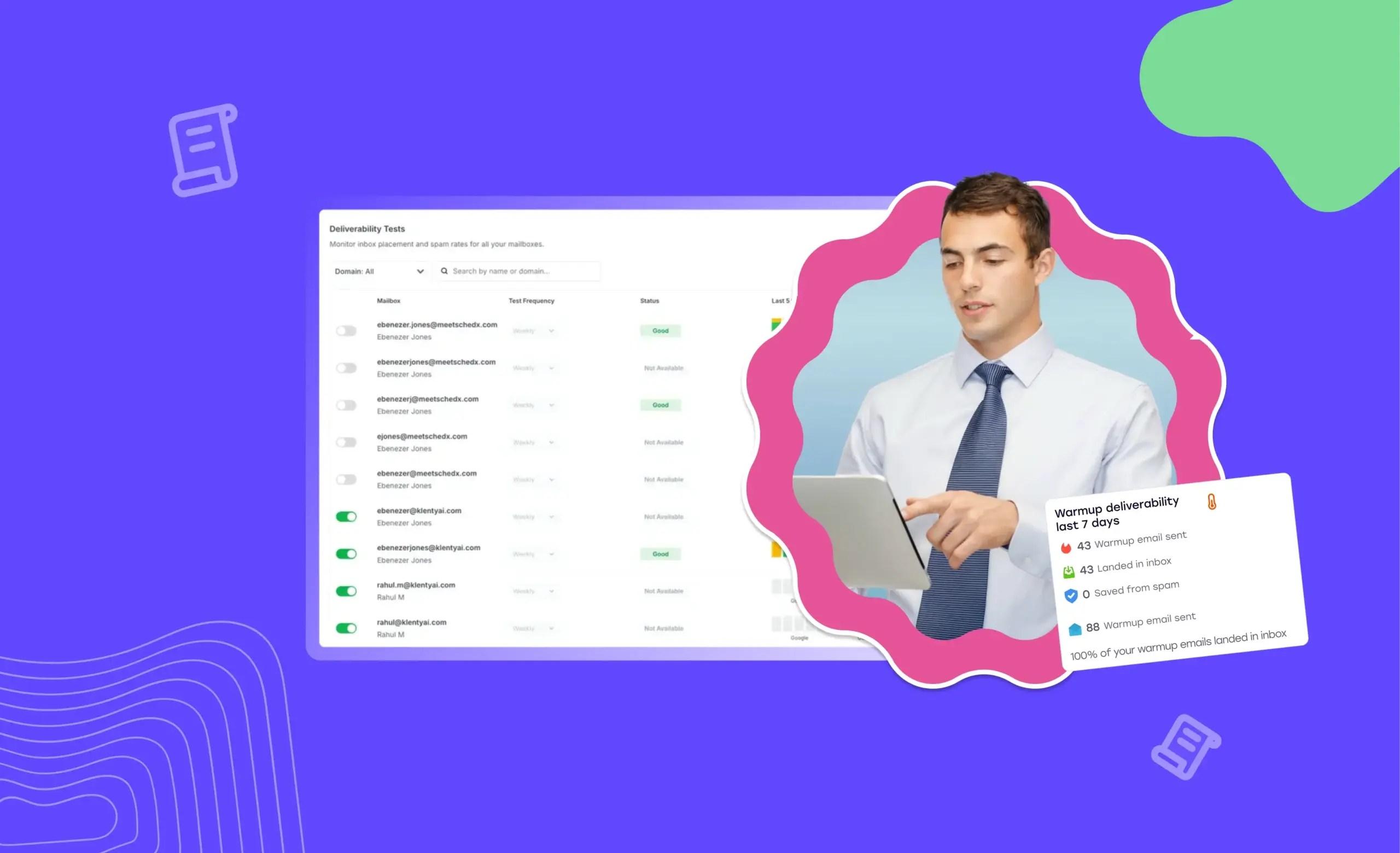Cold emails can be one of the most effective channels of lead generation. But - only if you can get those emails delivered to your prospect’s mailbox. So, email deliverability is the single most crucial factor that determines the success or failure of your cold email campaigns.
Email deliverability is the percentage of your emails that get sent to your prospect's inboxes. Deliverability is a critical factor in sales outreach because, unless emails reach inboxes, prospects don't receive them, and a sales conversation cannot start.
If your cold emails are not getting delivered, then crafting that perfect-to-action or that creative subject line or that ever so cheeky but personalized compliment will have no impact what so ever.
Boost email deliverability by sending emails from your own server, track engagement with custom links, control email volume, and ensure irregular human-like intervals between emails and your email campaigns are set as good as concrete.
As you start your cold email outreach, it is important to keep in mind various factors that can impact email deliverability and build them into your outreach strategy.
A Framework To Improve Cold Email Deliverability
There are essentially 3 basic hurdles to ensuring high cold email deliverability:
Hurdle 1: Don’t Get Reported as Spam by Your Recipients
When this happens often, the impact on your reputation can be quite drastic and immediate. The corollary to this is that as more and more people open your emails, add you to their contacts and send you replies, your reputation improves quite fast as well.
Hurdle 2: Don’t Get Flagged by Email/ Internet Service Providers
Email service providers look at data such as volume, overall bounce rate, etc to determine if you are engaged in suspicious activity. It is important to build up your reputation with Email/ Internet Service providers over a period of time.
Hurdle 3: Don’t Get Filtered Out by Spam Filters
More and more companies are investing in sophisticated spam filters. It is important that your email content and templates are well written and your email technical infrastructure needs to be properly set up.
1. Don’t Get Reported as Spam
One of the easiest ways to kill your email reputation is to have multiple prospects report you as spam. This can have a fast and immediate impact on your email deliverability.
a) Make It Easy To Opt Out
A simple way to reduce the likelihood of you being reported as spam is to make it easy for your prospect to unsubscribe. Provide unsubscribe links at the top/ bottom of your emails, so that if your prospect is not interested in hearing from you, he can quickly and painlessly opt out without having to mark you as spam. If your prospect chooses to opt-out, make it frictionless. Don’t ask them to re-enter their email id/ username or pass additional hoops.
b) Target the Right Prospects
When doing cold outreach, it is almost always a bad idea to pull a list of 1000 emails and send them a completely generic email with no targeting or personalization. There are various ways to make your outreach more personalized. Either spend some time on research and add some personalized touches to the email. Or segment your prospect list into smaller and smaller niches such that you can craft a personalized message that is specific to each niche.
Reach out to prospects who actually might be interested in your product/ service rather than sending blanket outreach emails.
Don’t be over aggressive in your email follow-ups. Wait for a reasonable time frame between each follow-up. Sending 4 emails in 3 days is more likely to irritate your prospect than 4 emails over a 20 day period.
c) Create positive feedback loops
Even if your prospects have not marked you as spam, if most people are ignoring your emails, then it sends a signal that your emails might not be of interest.
The corollary to this is that as more and more people reply to your email or add you to their contacts etc, it sends a strong signal that you are an emailer with credibility and your email reputation goes up. So use your email IDs for activities which are not just restricted to cold emailing. Use it to email your friends and colleagues to warm up your reputation.
2. Don’t Get Flagged by Email/ Internet Service Providers
Email service providers and ISPs monitor email activity to ensure that your email usage pattern is consistent with good practice.
a) Maintain a Consistent Volume
Start with a small volume of 40-50 emails and warm up your reputation over a period of time. Also, send consistent volumes of emails every day. Rather than send 500 emails every Thursday and none for the rest of the week, send 50-100 every day. Over a period of time, you can expand this to 1000+. This is especially important if you have created a new email id for cold emailing.
b) Use Automation Carefully
If you are using an outbound sales automation software (like Klenty) to send mail merges or cadences, set it up such that there is a reasonable interval between emails. This can be a key factor in deciding the success/failure of your email campaigns. At Klenty for example, we use a random interval of approx 2 minutes between each email sent by you. Sending 100 emails in a minute is a signal that you may be a bulk emailer.
c) Minimize Bounces
The number of bounces that you get is a strong feedback signal to your service provider. The more bounces you get, the more your reputation suffers. This, in turn, will lead to more bounces! It is a vicious cycle that is tough to get out of and your email deliverability will suffer for a long time.
Keep your email list fresh, regularly cleaned out and verified from time to time. You can use an email verification service like Briteverify or Findthatlead or Clearout to validate your emails addresses. At Klenty, we provide an add-on to verify your email addresses before contacting your prospects.
d) Use Different Templates
Another signal that your Email Service Provider looks at is whether you are sending the same email over and over again. Having personalization tags like First name, Company etc. can help to some extent. If you are using Klenty, you can setup multiple A/B testing options. That way different email templates will be used instead of the same email content being sent repeatedly.
e) Keep Track of Your Reputation

Use a tool like Sender Score to keep track of whether your domain/ IP’s reputation is moving up or down over a period of time. If you see your reputation go down, it may be time to cut down on email volume and focus on improving email deliverability.
3. Working Around Spam Filters
Spam filters are getting increasingly sophisticated in detecting marketing/ sales emails and even if you get past the ISP/ ESP and write a targeted email which provides a lot of value to your prospect, you still need to make sure that you don’t get flagged by your recipient's spam filters.
a) Setup Your Email Infrastructure Properly
If you use Klenty to connect to your Gmail or outlook account, then this is taken care of out of the box. But if you are setting up an SMTP server on dedicated IP using a service provider like Sendgrid, Rackspace, or any proxy servers, then this is quite important. You need to add the appropriate SPF records and DKIM records and verify ownership of your domain - so that the recipient can trust the emails sent by you.
Other Factors That Impact Cold Email Deliverability
- In general short URLs and any form of link, tracking tend to have an impact when your recipient has advanced spam filters. For the really sophisticated prospects, you may even want to turn off email open tracking and remove all images.
- Generic URLs tend to have an impact on your deliverability when your recipients have advanced spam filters, due to the fact that they often get marked as spam or blacklisted. For this reason, you should opt to use secure, branded links instead. You can use a tool like Rebrandly URL Shortener to create custom links with a domain that you own to ensure that your email deliverability isn't affected.
- Attachments usually have a negative impact on deliverability. So it would be a good idea to hold off on sending attachments in your first email. If you need to, then upload to Google Docs/ Dropbox, etc and send the link over.
- Draft your email template carefully. If it appears overly salesy, has too many exclamation points !!!! , CAPS, multiple colors, too much HTML, etc. These are all indicators that this might be a spam email and increase the likelihood of it being filtered out.
Use a tool like Mail-tester to check whether your template looks spammy and what is the likely deliverability of your emails.

It all boils down to this: Don't SPAM
Ultimately, every time you send a cold email, you need to ask yourself, is this SPAM?
If you are sending emails advertising bulk pharmacy products to an indiscriminate list of email ids, then that is definitely spam. You are unlikely to find yourself in anyone’s inbox in a hurry and your email deliverability will take a nose dive incredibly fast.
On the other hand,
- if you are sending a well written, thoughtful email and
- if you are have done your research and are contacting people who are a good fit for your offering and
- if you make it easy and respect their right to opt-out
then cold emailing is a powerful and effective channel for you to find new customers.
Happy cold emailing!





